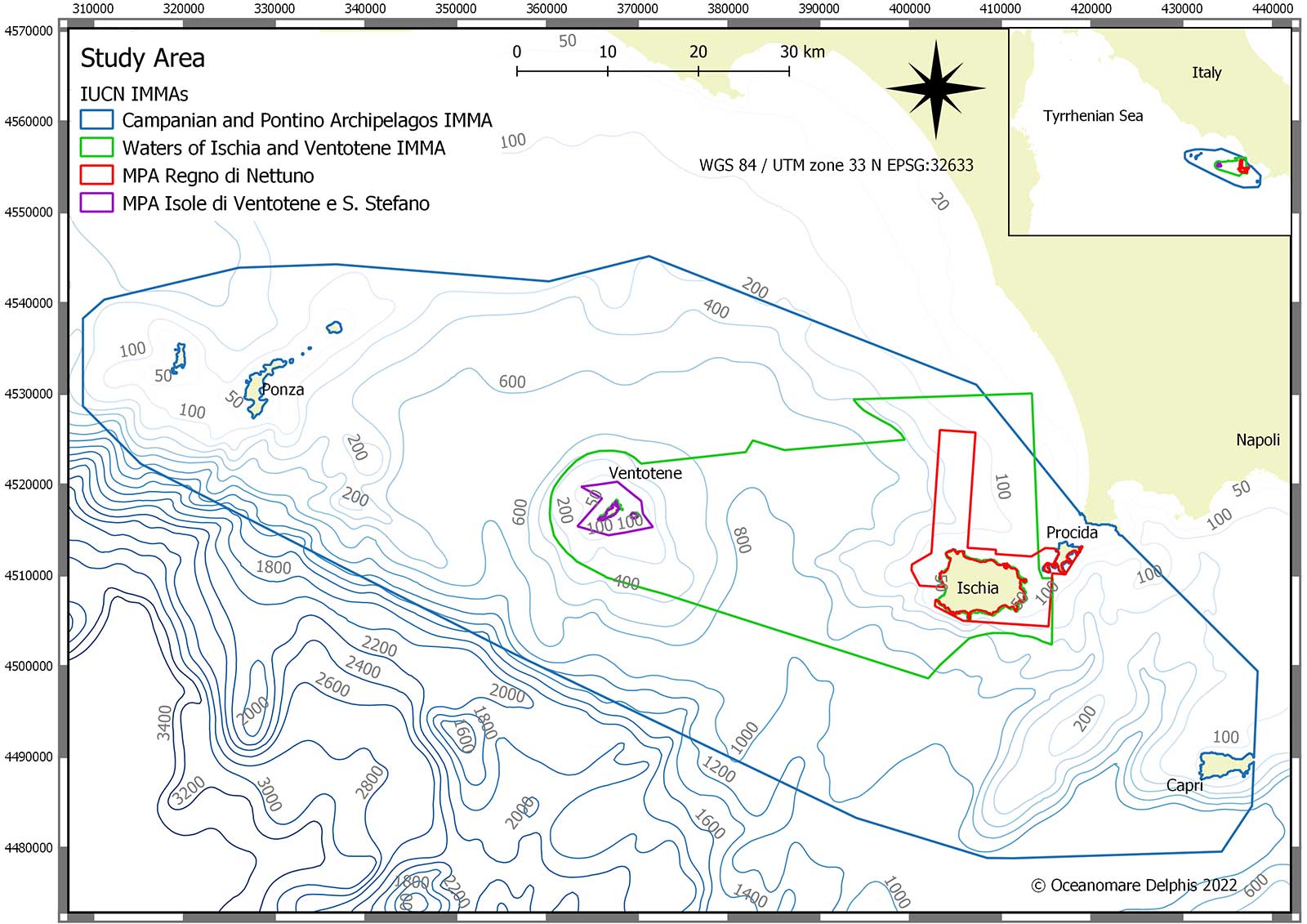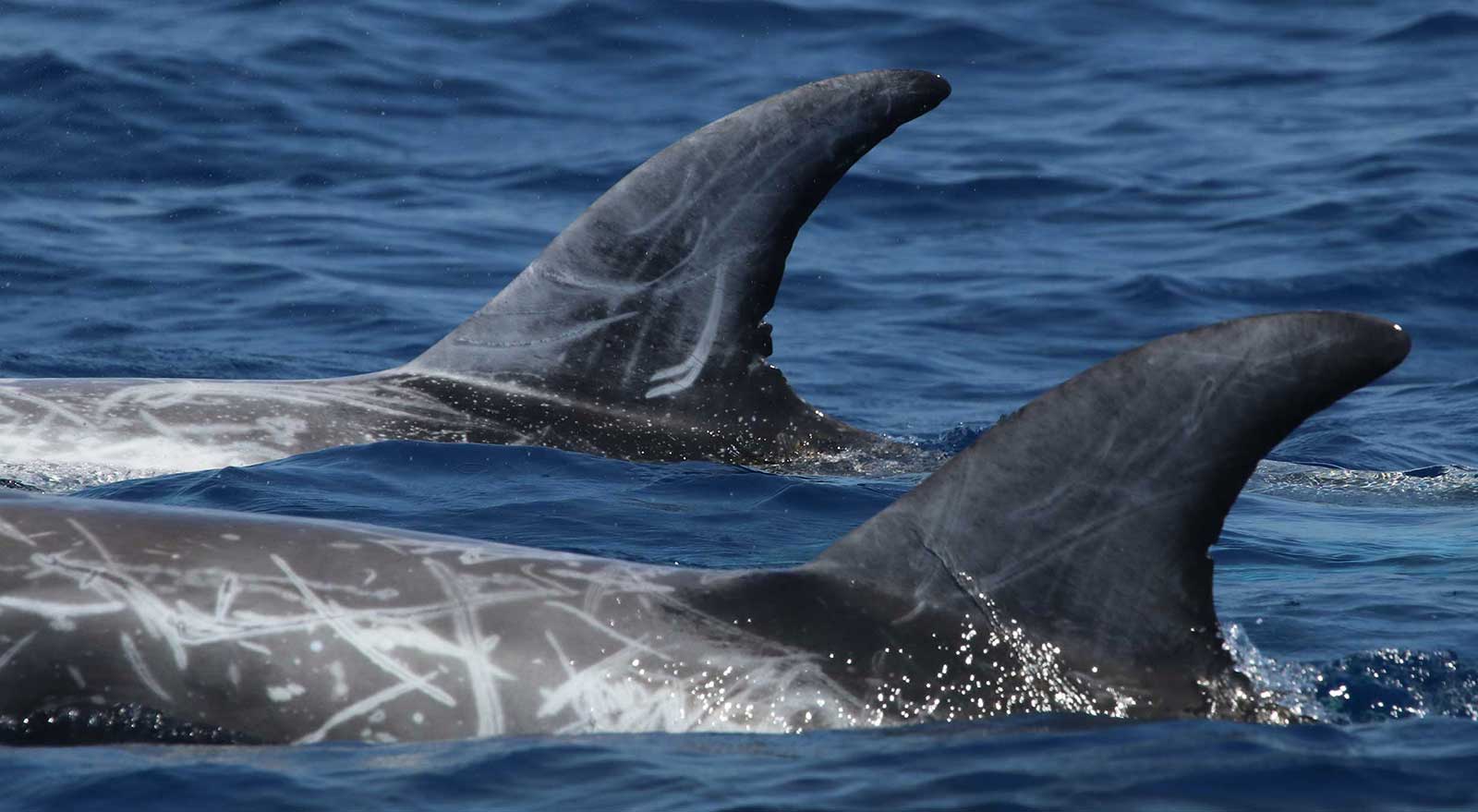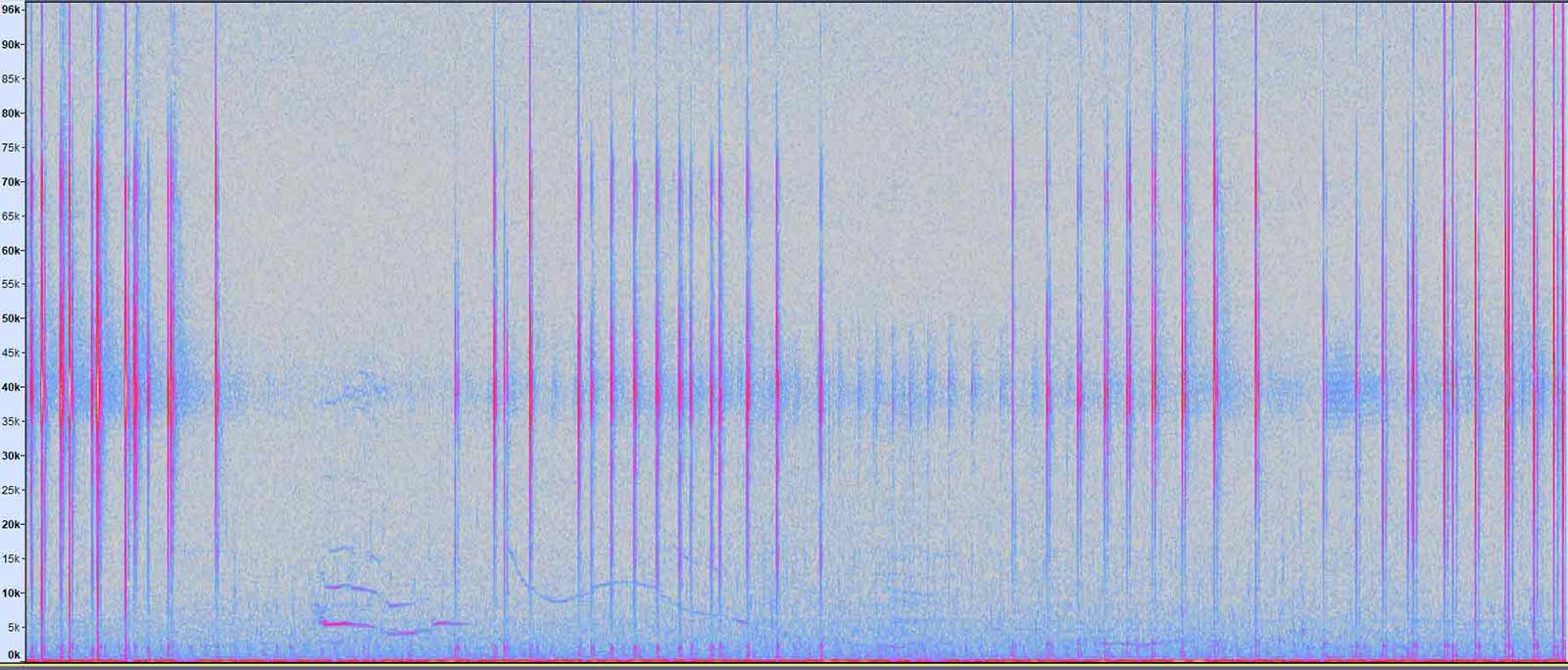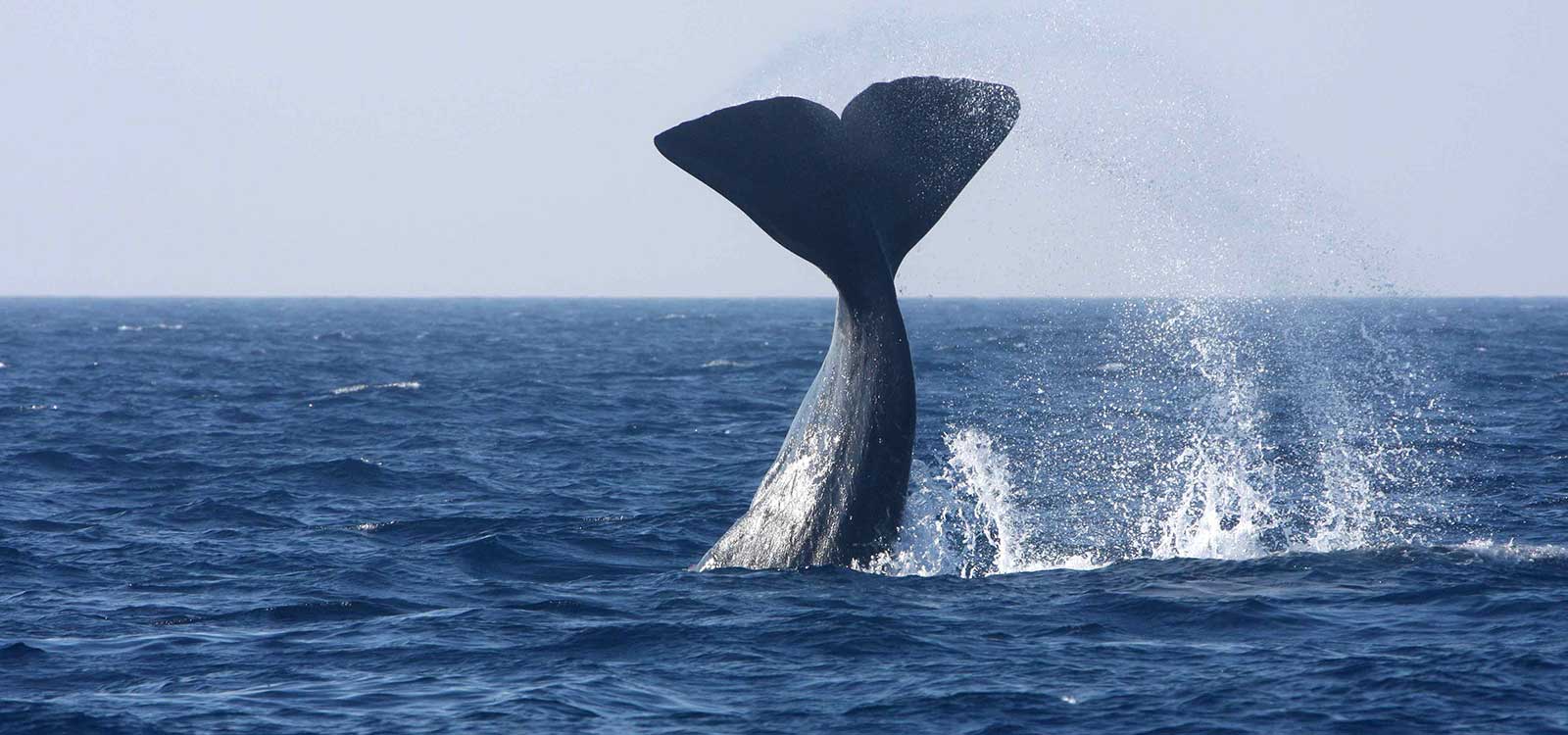Ischia Dolphin Project
The Pontine and Campanian Archipelago represent a unique opportunity to study cetaceans. Since 1991 the presence of seven different Mediterranean species has been recorded there.
L’area di studio è conosciuta per la sua alta biodiversità pelagica. La regione è stata descritta come sito di alimentazione per le balenottere comuni (Balaenoptera physalus), sito di alimentazione e riproduzione per le stenelle striate (Stenella coeruleoalba), i grampi (Grampus griseus), i tursiopi (Tursiops truncatus) e i capodogli (Physeter macrocephalus). Infine l’area è stata classificata come habitat critico per il common dolphin (Delphinus delphis) mediterraneo nel Piano d’Azione per i Cetacei dell’IUCN. Anche i globicefali (Globicephala melas) are also recorded.
Since 1997, the study has focused on the Cuma Canyon, a deep submarine valley located between the islands of Ischia and Ventotene. Submarine canyons play a critical role in biological events and are often areas of high species diversity because of their oceanographic features.
Grazie ai dati raccolti con il vostro aiuto, nel 2008 Oceanomare Delphis è riuscita a far includere nell’Area Marina Protetta “Regno di Nettuno” – isole di Ischia, Procida e Vivara – una zona a protezione speciale dedicata ai cetacei e all’habitat critico di delfino comune, classificato in Mediterraneo come endangered nella Lista Rossa dell’IUCN.
Nell’ottobre 2016, durante il primo Workshop IMMA (Important Marine Mammal Area) per il Mediterraneo organizzato da IUCN Marine Mammal Protected Areas Task Force, Oceanomare Delphis ha candidato le acque di Ischia e Ventotene e gli Arcipelaghi Pontino e Campano come Important Marine Mammal Areas (IMMAs), dopo un anno, entrambe le aree sono state riconosciute come IMMAs.
Study Area

The study area is located in the central Tyrrhenian Sea (Italy) and covers about 8800 km2; it includes the Campanian Archipelago (Gulf of Naples, islands of Ischia, Procida, Capri) and the Pontine Archipelago (Gulf of Gaeta, islands of Ventotene and Ponza) both located on the eastern Tyrrhenian continental margin. It is characterized by volcanic activity and complex geological structures, including submarine canyons, submerged mountains, erosional channels, and rocky shoals.
The waters northwest of Ischia include the submarine canyon of Cuma, known for its variety of pelagic fish, seabirds, and cetaceans. The canyon trench (850 m deep) forms an underwater valley between Ischia and Ventotene.
Southeast of Ischia, in the Gulf of Naples, the shelf is interrupted offshore by two large canyons (Magnaghi and Dohrn), which form the Magnaghi-Dohrn canyon system.
Goals
The main goal of the project is to identify key areas for cetaceans. Other objectives are:
Beyond these merely scientific goals, the Ischia Dolphin Project aims to improve the management of cetacean species by:
raise awareness among the public about the threats and problems of cetaceans and their environment;
sharing the results of the research with the local and the international authorities, as well as to the scientific community and the environmentalist organizations;
the protection and conservation of the area.
RESEARCH TECHNIQUES
Photo-identification
Photo-identification is a valuable and widely used technique in research to obtain important information on population size, distribution and movements of animals, social organization, reproductive rate, and habitat use. Cetaceans are photographed and identified based on natural and permanent features present on the body.

Sperm whale: 102 individuals photo-identified. Of these, 71 (70%) were sighted in one year only, and 31 (30%) were recaptured in different years after their initial identification.
Common dolphin: 94 photo-identified individuals. 74 of the identified individuals were recaptured over the years. Of these, 24 dolphins were sighted over two to four years; 19 individuals were sighted over five to seven years; 31 showed a high degree of site fidelity as they were sighted multiple times over eight to eleven years.
Risso's dolphin: 43 photo-identified individuals.
Bottlenose dolphin: 204 photo-identified individuals, including 44 females. 110 individuals (including 33 females) have been re-sighted over the years.
Bioacoustic
Cetacean detections are also conducted acoustically, listening to the sounds produced by the animals.
Il progetto utilizza un array di idrofoni stereo trainati realizzata nel laboratorio CIBRA (larghezza di banda 600 Hz – 100 kHz) dell’Università di Pavia.
Le differenze nel tempo di arrivo delle vocalizzazioni dei cetacei sui due idrofoni ci permettono di localizzare gli animali utilizzando i moduli di PAMGUARD.
Il sistema di riproduzione del suono installato a bordo permette a tutti i partecipanti di ascoltare le voci del mare dal vivo. In caso di avvistamento l’ascolto in tempo reale delle vocalizzazioni dei delfini o dei capodogli è un esperienza entusiasmante.

Spectrogram of clicks and whistles of striped dolphin
Whistles, clicks, and other vocalizations are analyzed to define the acoustic characteristics of different species in the study area.
The study focuses on acoustic communication in animals, the development of protocols for monitoring and census with passive acoustics, and the creation of an archive of Mediterranean cetacean sounds.
Behavior
Through behavioral data, we obtain information to understand cetacean activities like feeding habits, social communication, and interaction with human activities.
We record different variables (group size and composition, aerial behaviors, social interactions, and so on) at standard intervals of three minutes (3-minute sampling method).

